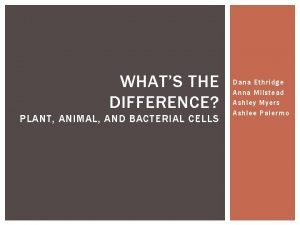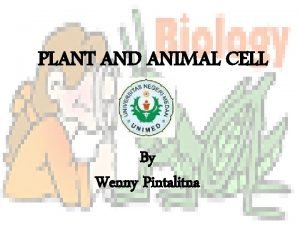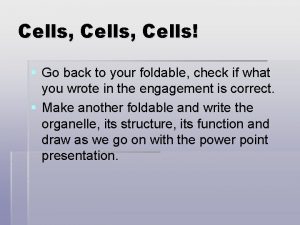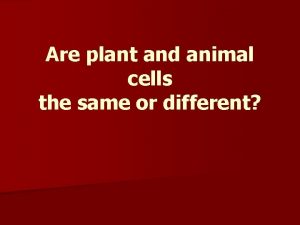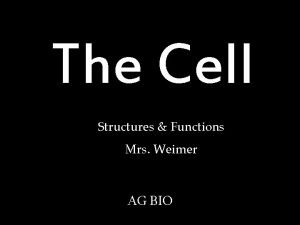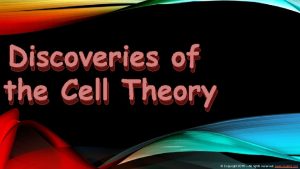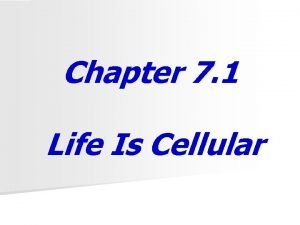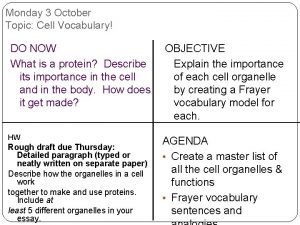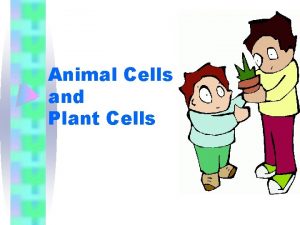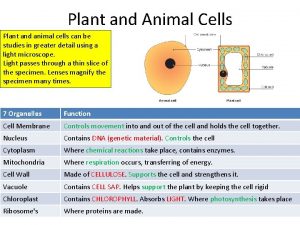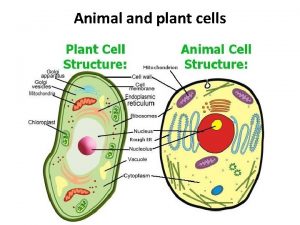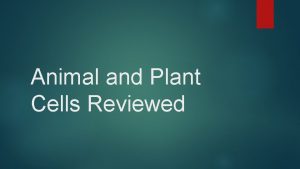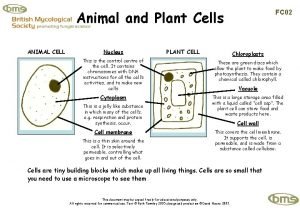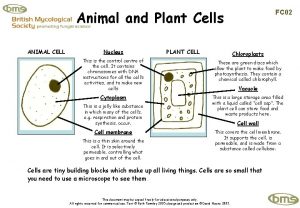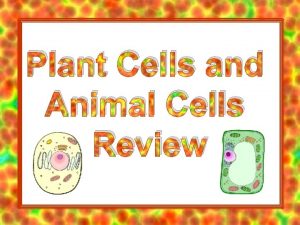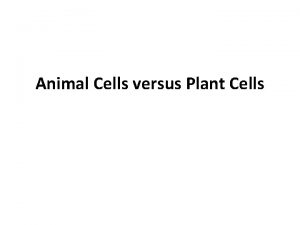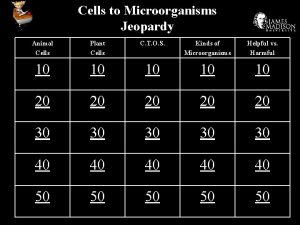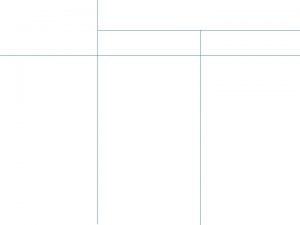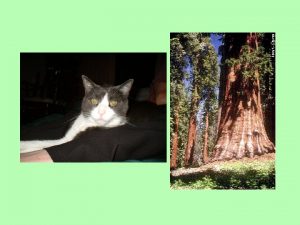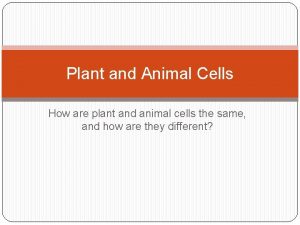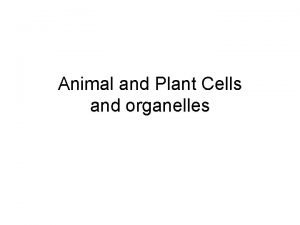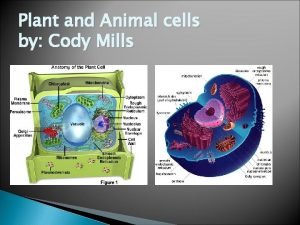1 How are plant and animal cells different






















- Slides: 22

1. How are plant and animal cells different? a. Animal cells have cell walls b. Animal cells have chloroplasts c. Plant cells have cell membranes d. Plant cells have cell walls and chloroplasts

2. If you see a plant like this, it is most likely a ____. a. Gymnosperm b. Flowersperm c. Angiosperm d. bloomsperm

3. This is an example of ______. a. b. c. d. Deposition by wind Deposition by water Erosion by wind Erosion by water

4. Volcanoes, earthquakes, mountains, and trenches are caused by the ______. a. b. c. d. Wind and weather the ocean tides Gravitational pull of the Earth The movement of tectonic plates

5. This is an example of _______. a. An open circuit that is working b. An open circuit that is not working c. A closed circuit that is not working d. A closed circuit that is working

6. This is an example of a _________. a. b. c. d. Series circuit Parallel circuit Simple circuit Open circuit

7. All of these are examples of ________. a. Learned behaviors b. Environment c. Inherited traits d. plastic surgery

8. Both plant cells and animal cells have an outer covering called a _______. a. Cell wall b. Nucleus c. Cell membrane d. Cell cover

9. A structure that allows water to drain away is called a __________. a. Road grate b. Storm drain c. Filter d. grid

10. When two continental plates collide, ________. a. Tall mountain ranges form b. Deep trenches occur c. volcanoes d. erosion occur

11. What do we know about like and unlike poles? a. Like attract, unlike repel b. Like and unlike attract c. Like and unlike repel d. Like repel, unlike attract

12. Which of these statements is NOT true about electromagnets? a. They are permanent magnets. b. They are useful because they can be controlled. c. The more wire used, the more powerful they are. d. They are used in electronics.

13. What is the difference between mechanical weathering and chemical weathering? a. Mechanical changes the rock, but chemical does not b. Chemical changes the rock, but mechanical does not c. Neither one changes the rock d. They both change the rock

14. Which one of these is NOT a vertebrate? a. Dog b. Bear c. Fish d. Crab

15. Which of these is not an angiosperm? a. b. c. d. Magnolia Tomato plant Pine tree Apple tree

16. What are parts necessary for a simple circuit to turn on a light? a. 2 lights, wire, insulator b. 2 lights, insulators and conductors c. 1 light, power supply d. Power supply, wire, light

17. Contour plowing and terracing are used to ______. a. Allow water to run off easily b. Prevent soil from eroding c. Prevent chemical weathering d. Prevent earthquakes

18. Why are faults considered to be constructive? a. The land can move down. b. The land can move up. c. The land can move from side to side. D. The land does not move at all.

19. Which of these plants is NOT vascular? a. Tall tree b. Begonia c. Flower d. moss

20. Which of these is true about heredity? a. If your parents have blue eyes, you will. b. If your grandparents have blue eyes, you will. C. If neither of your parents have blue eyes, you will not. D. If your parents have blue eyes, you may or may not.

21. What is an indication that a chemical change has occurred? a. b. c. d. Heat, light, a reaction, color change Something changes from a liquid to a gas Something changes from a liquid to a solid Some changes shape

Answer Key 1 -d 2 -c 3 -c 4 -d 5 -d 6 -b 7 -c 8 -c 9 -b 10 -a 11 -d 12 -a 13 -b 14 -d 15 -c 16 -d 17 -b 18 -b 19 -d 20 -d 21 -a
 Plant cell and animal cell venn diagram
Plant cell and animal cell venn diagram Mikael ferm
Mikael ferm Difference between bacteria and plant cell
Difference between bacteria and plant cell Plant vs animal cell
Plant vs animal cell Prokaryotic and eukaryotic venn diagram
Prokaryotic and eukaryotic venn diagram Is cytoplasm in plant and animal cells
Is cytoplasm in plant and animal cells Paragraph on animal cell
Paragraph on animal cell How animal cells use nutrients
How animal cells use nutrients Group of multicellular oxygen producers
Group of multicellular oxygen producers Plant and animal cell foldable
Plant and animal cell foldable Whats the difference between plant and animal cells
Whats the difference between plant and animal cells Different parts of the animal cell
Different parts of the animal cell Difference between plant and animal cell
Difference between plant and animal cell Cpalms investigating plant and animal cells
Cpalms investigating plant and animal cells Nuclulus
Nuclulus Rigid outer covering of plant cells
Rigid outer covering of plant cells Plant vs animal cells
Plant vs animal cells Olfactory groove keros classification
Olfactory groove keros classification Chlorocruorin
Chlorocruorin Masses of cells form and steal nutrients from healthy cells
Masses of cells form and steal nutrients from healthy cells Regulation of tubular reabsorption
Regulation of tubular reabsorption Thyroid parafollicular cells
Thyroid parafollicular cells Haploid and diploid venn diagram
Haploid and diploid venn diagram


